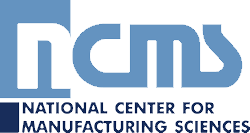Pollution Prevention and Control Technology for Plating Operations
—Second Edition—
George C. Cushnie Jr.
CAI Resources, Inc.
Table of Contents
- P2 Technology for Common Metal Finishing Processes
- Introduction
- Rinsing
- Alkaline Cleaning
- Acid Dipping and Pickling
- Anodizing
- Cadmium Plating
- Copper Plating
- Decorative Chromium Plating
- Electroless Nickel Plating
- Hard Chromium Plating
- Nickel Plating
- Tin and Tin-Lead Plating
- Zinc Plating
- Other Metal Finishing Processes
- Overview of Project Results
- Description of Project
- Overview of Users Survey Results
- Future Survey Efforts of the National Center for Manufacturing Sciences
- General Waste Reduction Practices
- Introduction
- Pollution Prevention and Source Control
- Good Operating Practices
- Drag-Out Reduction
- Rinse Water Reduction
- Reuse of Treated Wastewater
- Closed-Loop Processing and Zero Discharge
- Other Rinsing Information
- Summary of General Waste Reduction Practices
- Chemical Recovery
- Introduction
- Atmospheric Evaporators
- Vacuum Evaporators
- Ion Exchange
- Electrowinning
- Electrodialysis
- Reverse Osmosis
- Meshpad Mist Eliminators
- Chemical Solution Maintenance
- Introduction
- Commonly Applied Preventative and Corrective Bath Maintenance Techniques
- Microfiltration
- Ion Exchange
- Acid Sorption
- Ion Transfer
- Membrane Electrolysis
- Diffusion Dialysis
- Substitute Technologies
- Introduction
- Product Changes
- Chlorinated Solvents Use Reduction/Elimination
- Cyanide Use Reduction/Elimination
- Cadmium Use Reduction/Elimination
- Chromium Use Reduction/Elimination
- Other Chemical Substitutions
- Wastewater Treatment
- Introduction
- Conventional Treatment Technologies
- Costs of Conventional Wastewater Treatment
- End-of-Pipe Treatment System Data from the Users Survey
- Alternative Technologies for Metals Removal
- Off-Site Metals Recycling
- Introduction
- Availability of Metals Recycling Services
- Off-Site Metals Recovery Processes
- Waste Characteristics Requirements
- Off-Site Recycling Costs
- NCMS/NAMF Survey Data for End-of-Pipe Equipment (not available on-line)
- List of Abbreviations
- References

